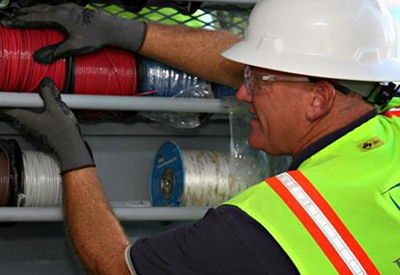IoT and Its Application in Electrical Power Systems, Part 2

January 5, 2017
In this second of two parts, Wasim Khan continues his discussion of the Internet of Things (IoT) and the Industrial Internet of Things (IIoT). Here, he focuses on the power industry. Part 1 appeared in the December 6, 2016 issue of EIN.
IoT is an emerging paradigm of Internet connected things that allow the physical objects or things to connect, interact and communicate with one another similar to the way humans talk through the web in today’s environment. It connects systems, sensors and actuator instruments to the broader Internet.
IIoT collects data from connected devices (i.e., smart connected devices and machines) in the field or plant and then processes this data using sophisticated software and networking tools. The entire IIoT requires a collection of hardware, software, communications and networking technologies.
There will be 26 billion IoT connected devices by 2020, according to Gartner Inc.
Examples of IoT usage in the electrical power industry
IoT in the electrical power industry is transforming the way things are done. IoT increases the use of wireless technology to connect power industry assets and infrastructure in order to lower the power consumption and cost. Examples of IoT usage include SCADA (supervisory control and data acquisition), smart metering, building automation, smart grid, and connected public lighting.
SCADA
SCADA is one of the major application areas of IoT. SCADA allows the centralized monitoring and control of remote located generation and transmission systems. It consists of sensors, actuators, controllers and communication devices at the remote field place, and central master unit with communication systems at the controlling side. It collects the data from sensors in the field and provides a user interface in HMI at central station. Also, it stores the time-stamped data for later analysis.
IoT SCADA is a step beyond SCADA that has been in use from earlier days. It provides real-time signal acquisition and data logging through IOT servers and internet technologies. It integrates the individual devices, machines, sensors and other electrical equipment with the Internet by realizing the functionality of supervision and control.
Smart metering
Smart metering is an essential element in smart grid implementations as they are using Internet of Things technologies to transform traditional energy infrastructure. Smart metering through IoT helps to reduce operating costs by managing metering operations remotely. It also improves the forecasting and reduces energy theft and loss. These meters simply capture the data and send it back to the utility companies over highly reliable communication infrastructure.
Building automation
IoT based solutions enable the efficient way of monitor and control of buildings to property owners as they connect lighting systems, elevators, environmental systems and other electrical appliances with internet and communication technologies. It saves the power consumption by automatically turning off the lights when rooms are not occupied and also by making sure of not drawing too much power by appliances. IoT based appliances provide remote monitoring and control through mobile and web applications to the end users or owners.
Connected public lighting
This is the part of a project under smart cities where wireless IoT solutions are deployed to connect IP based lights. This smart public lighting uses intelligent-connected outdoor LED luminaries that are centrally controlled from the control station. This type of infrastructure also facilitates dynamical adjustment of illumination based on environmental changing conditions. This would dramatically result lower operating costs and power consumption.
Smart grid
As discussed above that smart meter is a key part of the smart grid and there are millions of smart meters already connected to the grid. Smart grid makes better use of available energy supply by optimizing electricity generation and distribution depending upon the load demand.
This includes Ethernet-based communication connected substations with intelligent equipment devices at each substation. This enables the automation of substations, which can be coordinated effectively for a better power distribution especially during peak hours.
IoT in smart grid determines parts where the lacking power and excessive power taking place at a given point of time and accordingly helps the generating stations to come online to fill up the gap.
With the use of Internet connected smart meters at individual customers, smart grid collects the current load data instead of historical data and then control local energy generation and load. This can also implement an efficient way of energy measures and billing the consumers.
The smart meter data can also be used for improving the real-time identification of grid fault location and restoration. Another benefit from IoT based smart grid is that it can schedule the consumers to operate their high wattage loads when demand on the grid is low.
Wasim Khan is an electrical engineer and Advertisement & Content Management Team Manager at Electrical Technology, www.electricaltechnology.org/. This article was first published online at Electrical Technology and has been lightly edited.
Read Part 1 here: https://electricalindustry.ca/latest-news/2694-iot-and-its-application-in-electrical-power-systems-part-1.

















